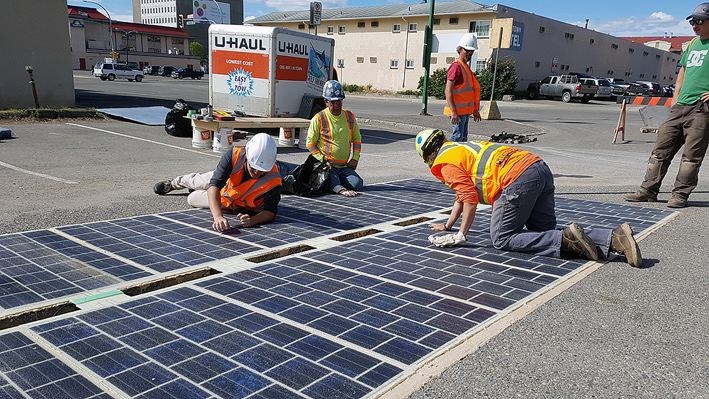Solar roads are a technological advancement that could revolutionize travel and municipal street projects.
Solar roads require no pavement.
Instead the surface is a series of interlocking solar panels that would gather a charge (daylight is all that's required, not intense sunshine) to make electricity.
The surface material also purports to be more durable than pavement, more weatherproof than pavement, and other benefits.
The City of Prince George is not building a solar road, but they have installed a solar patch of parking lot to test the initial theories of the technology.
City spokesperson Michael Kellett called it "an innovation in clean technology."
The installation was made possible by a partnership with YCS Holdings and Wattway, a pair of subsidiaries of Colas Group, a civil engineering firm headquartered in France that specializes in road and railway construction.
The patch installed in Prince George is 20 square metres at City Hall.
"The electricity generated is helping to meet city hall's energy needs while at the same time supplying additional power for other uses such as offsetting energy requirements for the electric vehicle charging stations in the parking lot," said Kellett. "The pilot project is part of the city's continuing efforts to reduce greenhouse gas emissions. Energy generation can be tracked in real-time and compared across seasons and environmental conditions."
According to Kellett, the photovoltaic panels are fixed directly onto pavement with no need to destroy and rebuild existing roadworks.
He added that "the millimetres-thick panels, which are made of a durable composite material, are robust enough to withstand vehicles of varying loads - including the weight of an 18-wheeler truck - in all types of weather."
The project was funded by the companies involved.



